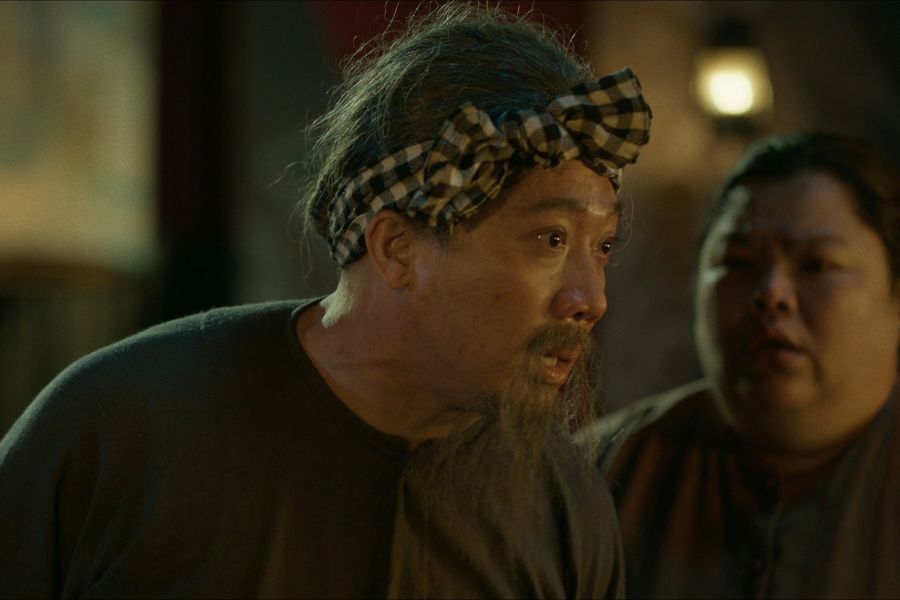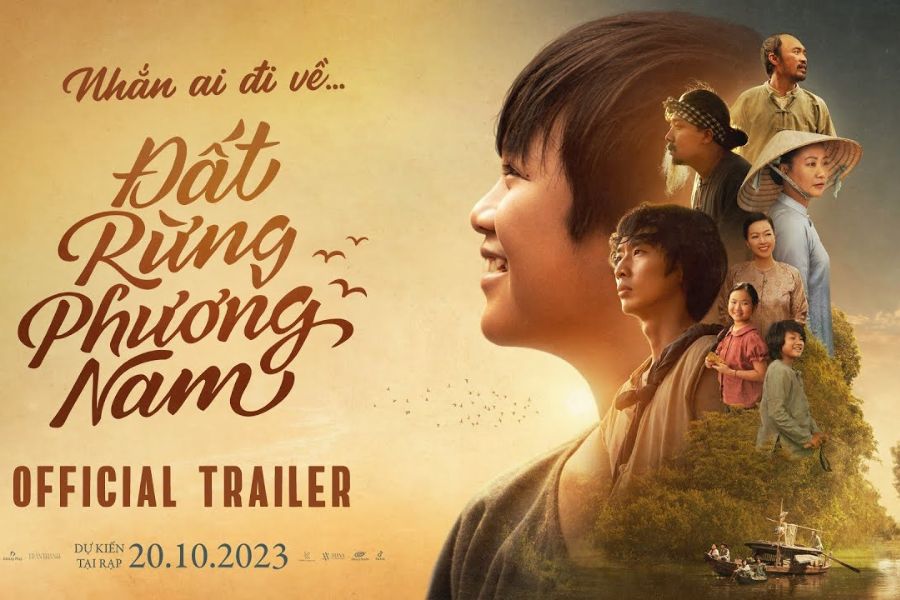“Southern Land” tells the story of people resisting foreign invaders with a backdrop of heroic music, despite some shortcomings in special effects and dialogue. Released on October 13th, “Southern Land” is the most anticipated Vietnamese film project at the end of the year, with a budget of over 40 billion Vietnamese dong. Inspired by the novel by writer Doan Gioi, the story revolves around An (Hao Khang) – a boy lost in the Western region while searching for his father, set in the early 20th century. On his journey, An receives help from many noble-hearted people, learning to accept loss and grow into a mature individual.
“Southern Land” directed by Nguyen Quang Dung
Similar to the 1997 version (directed by Nguyen Vinh Son), the film intertwines the story of An searching for his relatives with the southern people’s anti-French colonial movement. However, these two storylines are closely connected throughout the 110-minute duration.
The screenplay is constructed as an epic about the resilient people during a tumultuous time. The film begins with a dramatic segment when the colonial forces hunt down An’s mother and him due to accusations against his father as a rebel. On his way back to the Western region, an incident leaves An alone and lost. The only clue to finding his father is his mother’s keepsake – a family necklace.
An survives by living with Ut Luc Lam (Tuan Tran) – a skilled thief, and later, he is taken in by Mr. Tieu (Tien Luat). During this time, the French colonialists are intensively searching to eliminate members of the revolutionary movement, including Hai Thanh, An’s father (Huong Dong).

Throughout the film, numerous scenes and dialogues are strategically placed to emphasize the heroic spirit of the struggle against foreign invaders. Before the scenes of oppression, the people’s emotions are conveyed through the words of Ba Phi (Tran Thanh): “Our people understand our land. The land and sky will protect us.” In a final scene, he expresses his anguish and witnesses the deaths of his compatriots before the enemy’s guns.
Towards the end of the film, scenes depict ordinary people rising up one by one, showing their unwavering determination against the French soldiers, creating a sense of heroism.
After attending an early screening on October 11th, Phan Gia Nhat Linh stated that he was moved many times while following the story, particularly impressed with the characters portrayed by Tran Thanh and Tien Luat. “Ba Phi’s role made me emotionally proud of the love for the country. For me, the film evokes laughter, tears, and national pride,” the director said.
With dozens of actors, the casting is well-balanced. In particular, Hao Khang in the lead role is the soul of the film. The 13-year-old actor vividly portrays the innocent and bewildered aspects of a city boy who is separated from his parents and stranded in the countryside. At times, An realizes that his actions affect many people, evoking empathy from the audience. Hao Khang also brings tears to many viewers’ eyes in the scene where An “reunites” with his mother under the full moon, a moment that had a similar emotional impact in the previous version.
The character of Ut Luc Lam is a pleasant surprise in the film. In the television series, the character (played by Trung Dan) appears briefly and does not contribute significantly to the overall story. In the film, Tuan Tran gives life to a vibrant Ut Luc Lam, with a somewhat rugged and pragmatic personality. He accompanies An on many journeys, teaching the boy more about the vagabond life. In turn, An’s sincerity helps Ut Luc Lam, who has been lonely since childhood, understand the value of family. Producer Hoang Quan believes that Ut Luc Lam is the most outstanding character in the film, highlighting Tuan Tran’s acting transformation.

The screenplay is constructed as an epic tribute to the resilient people during a tumultuous time
The role of Mr. Tieu, originally a Dong Son craftsman, has more scenes in the film than in the TV series. Through Tien Luat’s performance, the character appears resilient and unyielding in the prison. In one scene, when he sees his daughter’s life threatened, Mr. Tieu’s emotions explode through his facial expressions and gaze. Bang Di, who plays Tu Mam, also makes a significant impression with her versatile performance, contributing to the dramatic intensity in the latter part of the story.
The action sequences of the group of revolutionary soldiers are well choreographed, although they tend to lean towards martial arts aesthetics. The scene where Vo Tong is sentenced to death for rebellion is elaborately designed with explosive effects. Amidst the chaos, Vo Tong stands resolute, leading the factions of Thien Dia Hoi and Nghia Hoa Doan to rise against the invaders.
The music significantly enhances the emotional impact of the film. Through the work of composer Duc Tri, the music supports and guides the audience’s emotions. At the beginning of the film, the wordless melody of “Bai Ca Dat Phuong Nam” (Lu Nhat Vu – Le Giang) is harmonized with symphonic sounds, transporting the audience to the vast fields of the Western region. In many scenes, such as the one where An expresses his longing for his parents, the crew uses traditional musical instruments like the dan bau, flute, and erhu to evoke the viewers’ emotions.
Director Quang Dung creates picturesque scenes, such as the moment when Ut Luc Lam and An sit together under the sky filled with flying herons. Slow-motion effects are used to depict the closeness of the two characters, like when Ut Luc Lam carries An while strolling in the countryside. The set design demonstrates the director’s meticulous attention to detail, with a one-shot sequence at the bustling market. The crew mobilized 400 extras and prepared nearly 500 costumes to portray life on the riverbanks and boats.
However, the film has weaknesses in visual special effects, such as scenes with herons flying or fireflies flickering in the night. During the premiere, some viewers found that certain dialogues seemed modern and not true to the time period, like when Ut Luc Lam and An use words like “dinh” (like) and “sang len” (up) in their conversation. The director explained that, while writing the script, the team considered using local, Sino-Vietnamese words to match the early 20th-century setting. In some humorous scenes, they wanted to use words that would be relatable to younger viewers because, ultimately, the film has commercial goals to achieve.
The film concludes with An’s search for his father still unresolved, as director Quang Dung hints at the possibility of a sequel. Tran Thanh, a co-producer, hopes the film achieves good revenue, enabling the production of subsequent parts to fully recreate the content from the original novel.
